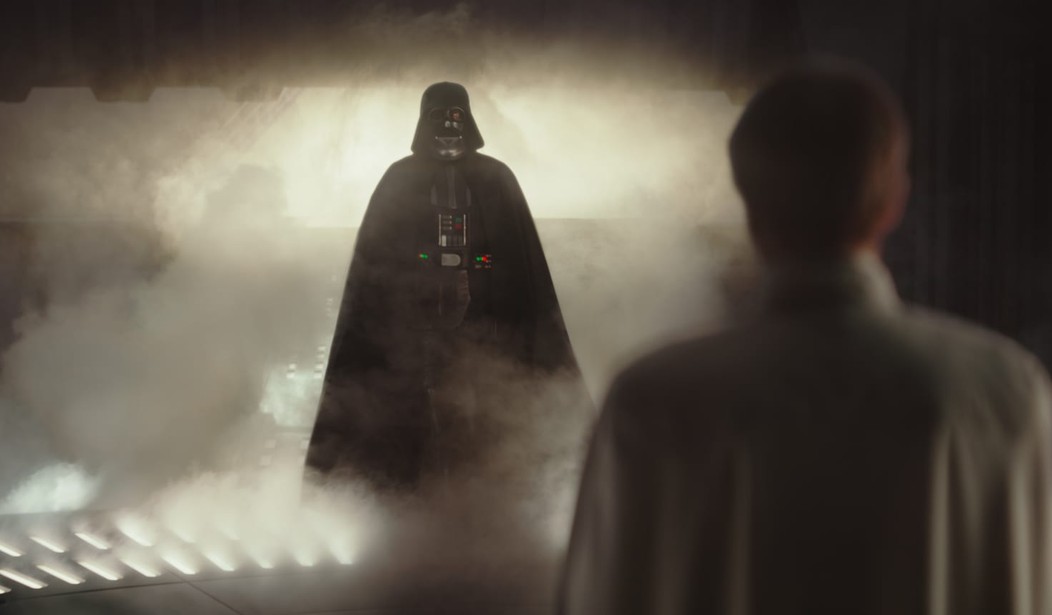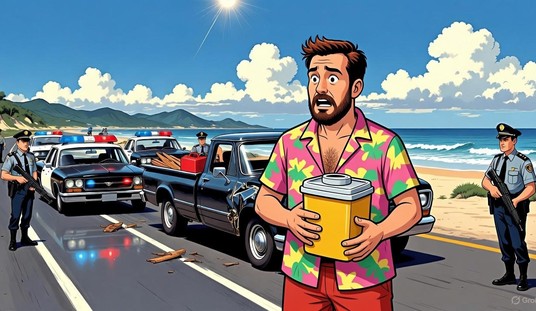Rogue One: A Star Wars Story took an impressive $155 million from the U.S. box office this weekend, marking the second biggest December opening ever, behind only The Force Awakens last year. Rogue One earned this impressive showing by presenting a refreshingly new story with new characters that fleshed out one of the most perplexing problems with the original trilogy.
The new Star Wars film did not just do well in the U.S., however. With $134.9 million overseas, Rogue One took the fourth best December opening in the international box office, behind only The Force Awakens ($281 million), Avatar ($164.5 million), and The Hobbit: An Unexpected Journey ($138 million).
Rogue One succeeded because it is not just another Star Wars film. Some — like PJ Media’s own Andrew Klavan — have argued that “the only genuine emotion it inspires is nostalgia,” marking another success for cinema greed over true artistic value.
It is, of course, impossible to deny that the franchise is designed to make money — that’s why any for-profit business exists, after all. But Rogue One also achieved something unique among the Star Wars films: it demonstrated a truly costly sacrifice which gives the original trilogy more meaning, not less.
It is no spoiler to say that Rogue One deals with events leading up to Star Wars: A New Hope (1977). Indeed, the trailers significantly hint at the film’s plot as well: a team of misfit rebels join together to steal the plans of the Death Star, the Empire’s ultimate weapon.
These plans feature prominently in A New Hope. Indeed, without them, Luke Skywalker (Mark Hamill) would not have been able to destroy the Death Star and save the rebellion.
Famously, Skywalker succeeds because there is a fundamental weakness built into the design — a shot to the exhaust port will bring down the entire battle station, which is the size of a small moon.
Wait — what?! One blast to an exhaust port is enough to destroy an entire space moon? That makes no sense. Or does it? …
Rogue One explains why, and the story is legitimately moving.
The new film follows the storyline of Jyn Erso (Felicity Jones), an orphan who grew up among the rebellion. Her father, Galen Urso (Mads Mikkelsen), is a head designer of … the Death Star! But even while Galen works to create the ultimate weapon of planetary destruction, he has a powerful secret, one that will change the fate of the galaxy.
Ultimately, the rebellion gets their hands on the all-important plans, but not without an epic battle that will knock your socks off.
Just be warned: Rogue One is not afraid to kill main characters, slowly and painfully. Make no mistake: This is not your simple coming-of-age adventure tale, it is a story of true sacrifice, and that’s what makes it a great story.
To be sure, Rogue One is not without its faults. It almost stands alone as its own movie, but the evil of the Empire is largely assumed and not proven.
One of the key aspects of A New Hope which made it so successful wasn’t just the fact that it presented good versus evil — it presented that narrative on two visceral levels. Early in the movie, Luke’s family is brutally killed, and an entire planet is destroyed.
Not only does the audience see Luke witness direct loss, but it sees Obi-Wan Kenobi feel “a great disturbance in the Force, as if millions of voices suddenly cried out in terror and were suddenly silenced.” Even the language of that statement is creepy — and it serves to highlight the evil of the empire.
Rogue One is no cake walk, but the evil of the Empire is assumed from the beginning. Yes, the Empire is engaged in building a Death Star, and it could be argued that only an evil government would want to do such a thing. Even so, Rogue One lacks the visceral evil presented in A New Hope, and that is a weakness if the movie is taken as a stand-alone film.
Another weakness lies in the fact that Jyn Erso and Rey (Daisy Ridley) from The Force Awakens are pretty much the exact same person. It’s cool that Star Wars can make ladies play the leading role, but is the young, British, attractive orphan with a grand destiny the only female character they know how to write? “Strong female character,” much?
Jyn and Rey are both orphans, recruited into a rebellion by traumatic events around them that require their unique talents. They both become heroines, leaving their homes and autonomy for a role in a grand adventure. They have similarly confident — and even rebellious — attitudes, and are pretty brunettes with British accents. They are, in short, the same person.
In fact, Felicity Jones even filmed a PSA saying, “I have a very important message: I’m not Daisy Ridley. … She’s lovely, don’t get me wrong, but I can assure you she and I are completely different people.”
While Jyn ultimately is a compelling character, her similarity to Rey is a problem. With any luck, their characters will diverge as audiences learn more about Rey’s backstory in the upcoming Episode VIII.
Despite these weaknesses, Rogue One is a compelling story of hope and sacrifice. As a Christian, I find it heartening to see the value of sacrifice portrayed so effectively.
In response to Klavan and other detractors, I must assert that Rogue One is a good film that does stand on its own within the Star Wars universe. It captures the embattled sense of a true war movie, where only hard decisions and sacrifice will preserve a struggling cause.
Yes, the movie does have many tributes to earlier films, but the story is separate and does stand on its own. Rogue One may have benefitted from the Star Wars films that came before, but it was not just sliding by on their coattails. This movie earned its millions, and is definitely worth your time.
Watch the final trailer below.









Join the conversation as a VIP Member